#resource post
Explore tagged Tumblr posts
Text
KIP'S BIG POST OF THINGS TO MAKE THE INTERNET & TECHNOLOGY SUCK A LITTLE LESS

Post last updated November 23, 2024. Will continue to update!
Here are my favorite things to use to navigate technology my own way:
A refurbished iPod loaded with Rockbox OS (Rockbox is free, iPods range in price. I linked the site I got mine from. Note that iPods get finicky about syncing and the kind of cord it has— it may still charge but might not recognize the device to sync. Getting an original Apple cord sometimes helps). Rockbox has ports for other MP3 players as well.
This Windows debloater program (there are viable alternatives out there, this one works for me). It has a powershell script that give you a little UI and buttons to press, which I appreciate, as I'm still a bit shy with tech.
Firefox with the following extensions: - Consent-O-Matic (set your responses to ALL privacy/cookie pop-ups in the extension, and it will answer all pop-ups for you. I can see reasons to not use it, but I appreciate it) - Facebook Container ("contains" Meta on Facebook and Instagram pages to keep it from tracking you or getting third party cookies, since Meta is fairly egregious about it) - Redirect Amp to HTML (AMP is designed for mobile phones, this forces pages to go to their HTML version) - A WebP/AVIF image converter - uBlock Origin and uBlacklist, with the AI blacklist loaded in to kill any generative AI results from appearing in search engines or anywhere.
Handbrake for ripping DVDs— I haven’t used this in awhile as I haven’t been making video edits. I used this back when I had a Mac OS
VLC Media Player (ol’ reliable)
Unsplash & Pexels for free-to-use images
A password manager (these often are paid. I use Dashlane. There are many options, feel free to search around and ask for recs!). There is a lot that goes into cybersecurity— find the option you feel is best for you.
Things I suggest:
Understanding Royalty Free and the Creative Commons licenses
Familiarity with boolean operators for searching
Investing in a backup drive and external drive
A few good USBs, including one that has a backup of your OS on it
Adapter cables
Avoiding Fandom “wikias” (as in the brand “Fandom”) and supporting other, fan-run or supported wikis. Consider contributing if its something you find yourself passionate or joyful about.
Finding Forums for the things you like, or creating your own*
Create an email specifically for ads/shopping— use it to receive all promotional emails to keep your inbox clean. Upkeep it.
Stop putting so much of your personal information online— be willing to separate your personal online identity from your “online identity”. You don’t owe people your name, location, pronouns, diagnoses, or any of that. It’s your choice, but be discerning in what you give and why. I recommend avoiding providing your phone number to sites as much as possible.
Be intentional
Ask questions
Talk to people
Remember that you can lurk all you want
Things that are fun to check out:
BBSes-- here's a portal to access them.
Neocities
*Forums-- find some to join, or maybe host your own? The system I was most familiar with was vbulletin.
MMM.page
Things that have worked well for me but might work for you, YMMV:
Limit your app usage time on your smartphone if you’re prone to going back to them— this is a tangible way to “practice mindfulness”, a term I find frustratingly vague ansjdbdj
Things I’m looking into:
The “Pi Hole”— a raspberry pi set up to block all ads on a specific internet connection
VPNs-- this is one that was recommended to me.
How to use computers (I mean it): Resources on how to understand your machine and what you’re doing, even if your skill and knowledge level is currently 0:
This section I'll come back an add to. I know that messing with computers can be intimidating, especially if you feel out of your depth. HTML and regedits and especially things like dualbooting or linux feel impossible. So I want to put things here that explain exactly how the internet and your computer functions, and how you can learn and work with that. Yippee!
730 notes
·
View notes
Text
Meet the Mods!
We have eight mods, one for each companion, and a general mod for maintenance, backup and support!
@taashyvashedan who will head up Taash Week 2025!
@flowersforthemachines who will be the mod during Bellara Week 2025! Hi, I'm Flowers 🌸 I've been a fan of Dragon Age for over 10 years, but only joined the fandom recently, and am very excited to meet new people! (so don't be shy to come by and say hi) While I loved all Veilguard companions, Bellara is my absolute favourite, and I hope to spread more love for her through this event <3
@thedissonantverses who will be the mod for Davrin Week 2025!
@theunsinkablesappho who will be the mod for Harding Week 2025!
@ofcrowsanddragons who will be the mod for Lucanis Week 2025! I'm Crow (amiablecrow on Ao3) and I'm here to support the amazing fanworks created by our community! My first Bioware game was KOTOR, and I adore all the companions in Veilguard. I'm also an unapologetic multishipper with an Antivan Crow Lucanis obsession.
@biowaredisasterbisexual who will be the mod for Neve Week 2025! Hi all! I am BDB, and I’m pumped for this project. Not just for Neve, but also if my blog indicates anything, it’s that I love Neve Gallus. I participate in fandom community stuff over there, and also spread far and wide fic, art, and gifs from Veilguard as well as acting mildly unhinged. If you wanna get in on it, come on by!
@mageofquandrix who will be the mod for Emmrich Week 2025!
and @hyperions-light, the general/support mod! Hey there! My name's Lark! I loved Veilguard, and I'm so excited to get started with this project! I run community activities over at my blog-- if you like talking about your Rook or writing fic, I hope you'll come and say hello!
70 notes
·
View notes
Text
Fire Extinguishers
Because this has become a little more relevant to my life lately (**cough**)... let's talk fire extinguishers!

In the US, there are five categories of fire that a fire extinguisher might be designed to put out (other categories or designations may be used elsewhere, which is why this post is unfortunately a bit US-specific). Your local fire department can answer your questions and train you in how to use a fire extinguisher.
A - cloth, wood, paper, and other ordinary materials that might burn.
B - combustible and flammable liquids
C - electrical equipment
D - flammable metals
K - vegetable oils, animal oils, and fats in cooking appliances
Most home fire extinguishers are multi-purpose. They will have the letter designation on them somewhere. There are different types of fire extinguisher that contain different types of extinguishing agent.
For more info on how to use a fire extinguisher, visit:

24 notes
·
View notes
Text
On the benchmark, don't forget to go to settings, and set things up how you will want them in the actual game, as well!!

I got a new GPU basically just because this new release was going to ask too much of my older one, and I'm kinda excited for the DLSS feature that I don't think other games I play use (yet). So be sure to go in and adjust things to how you like them - although there's also 'import my settings' as an option!

You won't get as accurate of a reading on things if you don't update the default settings to suit your set-up, after all!
46 notes
·
View notes
Text
It's a sad inevitability that all good things come to an end, including our time with our Digimon. But, every ending is just a chance for a new beginning and with Digimon that means the start of a new growth cycle! Today we're going to be touching on the Digimon life cycle, focusing on how to care for a digitama and what to do while you wait for your partner's new life to begin!
First off, for the newer Tamers in the audience, Digimon do not "die" at the end of a growth cycle. Think of it more like a transformation; the Digimon will shed excess data and surround their Digicore in a hard protective shell while reforming their remaining data into a Stage I form. A Digimon is strictly speaking alive for every step of the process and even if we humans find it useful to assign terms like "brith" and "death" to the process, it's important to keep in mind that Digimon cultures tend to think of it more as a period of rest and rejuvenation rather than a strict end or start to one's life.
Next up we have the tamas themselves! Digitamas, or Digieggs if you prefer, are the natal stage of all Digimon with no real exceptions. Despite looking like the kind of eggs you'd find here on Earth, tamas are actually incredibly durable and require no outside heat to incubate. Fragments of tamas donated for research have been shown to withstand puncture wounds and small caliber fire without so much as a scratch! Lastly, Digitama also display a wide variety of colors and patterns. Patterns seem to be unique to the individual as there is no correlation between the colors displayed on the egg and what species it will hatch into. This is consistent between naturally occurring Digitama and ones that were created via a data composition machine, leading researchers to believe that the color of one's tama is analogous to finger prints in us humans!
"But Lady", I hear you asking, "That's all well and good but how do I care for a Digiegg if they just seem to hatch on their own?". Don't worry friend, there's actually a lot you can do for your partner to help them along in the hatching process! To keep things convenient for mobile readers, I'll be formatting this section into bullet points.
1. Prepare a nest or incubator for the tama: It is true that tamas don't need outside heat to incubate, but a safe environment for both the tama and the resulting newborn is always going to be ideal. Incubators are the high end solution to this, most models being the Digimon equivalent of those backpacks you can buy to carry your pets around in. They're temperature controlled and very easily portable, most actually do have straps to make them into backpacks, so it's hard to argue against getting one. That being said, if you can't afford the steep price tag, a nest will do just fine friend. Bunch up some old blankets and pile them onto a sturdy pillow and your new friend will hatch just as well as one kept in a fancy incubator.
2. Wait: The time it takes for tamas to hatch varies between individuals, and can even vary between an individual Digimon's growth cycles. Some artificial Digitama have been observed hatching in as little as ten minutes, while the longest recorded hatch time for a naturally occurring Digitama was a little under a month! Generally speaking though, most tamas take about three to five days to hatch regardless of their point of origin. Don't be stressed if your friend takes a little longer than usual, you can't rush growth.
3. Be prepared for change: While it is true that most Digimon's Stage I and II forms remain fairly consistent, it is still ultimately as random as digivolution. I've already done a resource post on what to do immediately after a tama hatches so I won't go too in depth here, but it is worth repeating that you should be ready to accept change as it comes and be prepared to help your partner with basic tasks for the few days to weeks it'll take them to reach Stage III again.
4. Last but not least, care for yourself: Even if we know our partners aren't gone forever, waiting for them to hatch can take its toll on us Tamers. It's important to keep yourself busy during this time and to use it to enrich your life away from your partner. I always take time between growth cycles to tidy up around the house and give myself a spa day. I think that having a clean home and a refreshed attitude helps both you and your partner come into this new experience with a better foot forward but you can do whatever will make you happiest! There's no right or wrong way to care for yourself, as long as you put in the effort it'll pay off.
That's all we have for now friends! As always, make sure to send us any questions y'all have on today's post and we'll try to answer them as they come. Good luck, and we hope that y'all's partners hatch soon!
37 notes
·
View notes
Text
Resources for Writing Mob AUs

Writing Tips from @mynotsoawesomescenarios
More Writing Tips from @creativepromptsforwriting
Resources for Writing the Mafia collected by @yoondoze
Mobs from Around the World, source: Wikipedia
More about Various Mob Organizations
133 notes
·
View notes
Text
Reading Club
Hey Wanderers!
We are now hosting a Reading Club on our Discord server!
In these reading clubs we read articles our authors have written and have discussions about them! Each week has a theme that flavors the articles we decide to read.
Can't make it or not on Discord? No worries! We record them and post them to Spotify too! Check our our first reading club here:
This week we read:
Coagulate by retiinas
Do Not Stop for Hitchhikers by UncertaintyCrossing
Mirrorman by minmin
A Disease of the Flesh by Vishardsh
We'll Face the Silence Together by Grendelnacht
Archivist Crossing
9 notes
·
View notes
Note
I would be curious to hear what classpect you’d give Phone Guy from FNAF
I'm afraid I am not familiar enough with this character to classpect them, nor do I have the time to become familiar! That being said, I am happy to provide the resources for you to classpect them yourself.
When I'm classpecting a character, I'll start by matching their personality to a few classes. I use these personality descriptions as a guide.
Think about whether your character seems more passive or more active. Passive classes are guided by others or act for the benefit of others. They are more likely to be kind, but less likely to stand up for themselves. The Passive Classes are: Muse, Sylph, Page, Seer, Heir, Rogue, and Bard. Active classes tell themselves what to do and do so for their own benefit. They are more likely to stand up for themselves, but more likely to be cruel. The Active Classes are: Maid, Knight, Mage, Witch, Thief, Prince, and Lord.
I narrow the class down further by comparing the character to examples from literature and history that the classes are based off of. Here's a quick list (the first group is passive, the second is active):
Muse (masters): Greek Muses, Jesus Sylph (assists): Nymphs, Fairy Godmother Trope Page (utilizes): Squire/Sidekick Trope, King Arthur Seer (knows): Greek Seer, Oracle of Delphi Heir (manipulates): Chosen One Trope, Beowulf Rogue (steals): Rogue, Robin Hood Bard (destroys): Shakespearean fool, Trickster Trope
Maid (assists): Maiden, Joan of Arc Knight (utilizes): Knight, Lancelot Mage (knows): Magician, Merlin Witch (manipulates): Witch, Morgan le Fay Thief (steals): Thief, Blackbeard Prince (destroys): Machiavelli's The Prince, Hamlet Lord (masters): Nobility, God (Christianity)
Aspects are a little more difficult because of how expansive they can be. First, take a look at the personality guide again and narrow it down to a handful, this time focusing on aspects. Afterwards, I find it helpful to look at this description of the denizens for each aspect. It will help you get a better idea of what each aspect encompasses. Look for what themes remind you most of your character! Lastly, take a look at the official aspect descriptions on the Extended Zodiac Page.
Once I think I know a character's classpect, I'll check it against other information about that classpect on the internet and see if what I'm reading reminds me of my character. If you're feeling especially industrious, keep in mind opposites and inverses! Figuring out what your character is not is also a good place to start from. You can use this post as reference for opposites and inverses.
Feel free to peruse my compilation of classpecting information, god tier aesthetics, and characters that I've already classpected! I will be happy to answer any questions you might have.
Remember that there is no wrong way to classpect a character. Good luck and I hope this helps!
If any of the links not connected to my blog break, the content can be found on my Google Drive.
Official Aspect Descriptions Personality Descriptions Aspect Denizens
#classpecting#homestuck#my post#ask#character classpecting#classpecting guide#god tier analysis#unanswered ask#resource post
4 notes
·
View notes
Note
https://thespecies.directory/ is a directory of species and you can search for specifically ARPGs on it. There's a couple semi-open and open species ARPGs, which'll almost guarantee not having to spend money. @Anon looking for an ARPG that doesn't require you spend money.
Good resource!
1 note
·
View note
Text
Tomorrow is the first #FinishedItFriday of the Finish What You Started 2023 event! Here's a quick guide to making a promo post if you haven't made one before.
Start with your most basic of basic info: Fandom, characters, ship (or gen), and rating.
Then, move into specifics. This includes content tags like genderbend, gore, nsfw, blood, animal death, etc. Ideally, these are at the top of the post and in the tags, for easy filtering and screenreaders. Don't just put them in the tags, as those won't travel with your post.
Include one or two key points that make your piece unique. Tropes, setting, whatever hooks a reader! Here it can even be the whole summary, as there are no character limits to worry about.
For fic, adding a screenshot of the AO3 metatext/info box is great for including more nuanced information (don't forget to add alt text!). I've also seen people set up their promo posts in the format of the AO3 metatext box, with each category as its own line.
And finally the hashtag #IFinishedWhatIStarted2023 so I can find and boost your work! You can also include the general event hashtag (#FinishWhatYouStarted2023) if you want.
What fandom tags you use are up to you, and where you want your work to show up. General practice is fandom, a separate tag for each character, and the ship name or character/character. If it's a special AU, make a tag for it! Your future self may thank you.
Here's a template example for fic:
Cw tag1 tag2 // I finished my Ship (or # ship) fic! Brief summary or title, personalize. Include the fandom name in the body somewhere.
*rating *setting *trope *trope *shocking event from fic Link to fic # fandom #character # character # ship # IFinishedWhatIStarted2023 # tag1 # tag2 # unique AU tag
For art:
CW tag1 tag2 // I'm done with this (#)Ship/Character piece! Title or brief explanation of the piece, setting, or any special focus you want to direct. Include the fandom name somewhere in the text. # fandom # character # character # ship # IFinishedWhatIStarted # tag1 # tag2 # unique AU tag
(don't forget alt text on your art! It can be basic if you want, like "character in place", as long as it's something)
I can add some of that information when I reblog it, but it's good to have in the base post as your promo may reach circles it does not usually. Make sure one or both of the event tags is on the post so I can find and include it! I'll check both every Friday.
"My work isn't good enough for a promo header-" Yes it is. You did it, you finished it. Be proud of that, if nothing else.
6 notes
·
View notes
Text
F.A.Q.
How do the events work?
Each companion from the Veilguard will have a week dedicated to them. We will announce the prompts for everyone’s weeks in advance, with one or several prompts for each day. Creators are encouraged to use those prompts to make fanworks focusing on the character of the week, though each week will have at least one free day to let everyone’s imagination run wild. You can submit several entries for one day, or create only one work for the entire week — the approach is completely up to you. Make sure to tag your submissions with #taashweek2025 or @ us in your post, so we can see and reblog them!
How closely should I follow the prompts?
You are free to interpret the prompts as you wish — there is no way to get them wrong. You are also allowed to create works based on original ideas not covered by the prompts, or combine prompts from several days in one work.
What kind of works are accepted?
Any kind! You may create fics, art, edits, or any other type of fanwork!
Screenshots/in-game photography, edits, and gifsets are allowed fanworks.
As long as the fanworks celebrate the character of the week, and don’t break any of our rules, they are a perfect fit for the event.
Are late submissions allowed?
Yes, you are free to post submissions even after the event is over. Just make sure to @ us or use the tag mentioned above, so we don’t miss them!
Can submissions include ships/other characters besides the character of the week?
You can include any ships or other characters in your submission, as long as it prominently features the character of the week and they don’t get overshadowed by other characters/relationships.
24 notes
·
View notes
Text
Digimon biology is absolutely fascinating, with individuals being able to evolve and adapt constantly to give them the best chance at survival. But this ability to adapt doesn't stop at digivolution; sometimes a Digimon's most fundamental code will spontaneously alter itself, creating what's called a species variant! Today we're going to look at a few of these variations and see what sets these Digimon apart from their "vanilla" counterparts!
Snow - Snow variants occur when a Digimon not suited to colder climates finds themself in a situation where evolution is not possible, and neither is migration. The most common examples of this variant are SnowAgumon and SnowGoblimon, whose original variants prefer temperate and arid climates respectively. Snow variants are recognizable by their lack of pigmentation and use of ice-based attacks!
Virus - These are the most common type of species variant, and occur when a non-virus species incorporates data from a non-sentient virus into their digicores! Contrary to popular belief, these variants are not more aggressive than their non-virus counterparts as the only thing that really changes is their coloration and typing.
Metal/Platinum - In contrast to the previous entry on this list, this specific type of variation is only found within virus type species! More specifically, this variant is found within the Numemon, Sukamon, and Etemon families. There's actually a lot of debate about whether or not this counts as a variant in the "traditional" sense as several of these Digimon actually digivolve into these new forms, but I went ahead and included them anyway.
Toy - And to round out the list we have the Toy species, of which there are only two! ToyAgumon and its sub-variant, BlackToyAgumon, are the only known Toy Digimon which makes them something of an anomaly. Researchers are unsure exactly what caused this adaptation, but whatever the original mutation was left their code unstable enough to actually allow for further variance. Both of the previously mentioned variants actually have an additional variation called the Clear species, whose bodies are semitransparent!
The amount of variation within Digimon is amazing, and mirrors us in so many ways! People will always be affected by their circumstances, and it's how we adapt to them to survive that makes us who we are. As always, send us any questions y'all have and we hope y'all have a great day!
14 notes
·
View notes
Text
Planet's Fucked: What Can You Do To Help? (Long Post)
Since nobody is talking about the existential threat to the climate and the environment a second Trump term/Republican government control will cause, which to me supersedes literally every other issue, I wanted to just say my two cents, and some things you can do to help. I am a conservation biologist, whose field was hit substantially by the first Trump presidency. I study wild bees, birds, and plants.
In case anyone forgot what he did last time, he gagged scientists' ability to talk about climate change, he tried zeroing budgets for agencies like the NOAA, he attempted to gut protections in the Endangered Species Act (mainly by redefining 'take' in a way that would allow corporations to destroy habitat of imperiled species with no ramifications), he tried to do the same for the Migratory Bird Treaty Act (the law that offers official protection for native non-game birds), he sought to expand oil and coal extraction from federal protected lands, he shrunk the size of multiple national preserves, HE PULLED US OUT OF THE PARIS CLIMATE AGREEMENT, and more.
We are at a crucial tipping point in being able to slow the pace of climate change, where we decide what emissions scenario we will operate at, with existential consequences for both the environment and people. We are also in the middle of the Sixth Mass Extinction, with the rate of species extinctions far surpassing background rates due completely to human actions. What we do now will determine the fate of the environment for hundreds or thousands of years - from our ability to grow key food crops (goodbye corn belt! I hated you anyway but), to the pressure on coastal communities that will face the brunt of sea level rise and intensifying extreme weather events, to desertification, ocean acidification, wildfires, melting permafrost (yay, outbreaks of deadly frozen viruses!), and a breaking down of ecosystems and ecosystem services due to continued habitat loss and species declines, especially insect declines. The fact that the environment is clearly a low priority issue despite the very real existential threat to so many people, is beyond my ability to understand. I do partly blame the public education system for offering no mandatory environmental science curriculum or any at all in most places. What it means is that it will take the support of everyone who does care to make any amount of difference in this steeply uphill battle.
There are not enough environmental scientists to solve these issues, not if public support is not on our side and the majority of the general public is either uninformed or actively hostile towards climate science (or any conservation science).
So what can you, my fellow Americans, do to help mitigate and minimize the inevitable damage that lay ahead?
I'm not going to tell you to recycle more or take shorter showers. I'll be honest, that stuff is a drop in the bucket. What does matter on the individual level is restoring and protecting habitat, reducing threats to at-risk species, reducing pesticide use, improving agricultural practices, and pushing for policy changes. Restoring CONNECTIVITY to our landscape - corridors of contiguous habitat - will make all the difference for wildlife to be able to survive a changing climate and continued human population expansion.
**Caveat that I work in the northeast with pollinators and birds so I cannot provide specific organizations for some topics, including climate change focused NGOs. Scientists on tumblr who specialize in other fields, please add your own recommended resources. **
We need two things: FUNDING and MANPOWER.
You may surprised to find that an insane amount of conservation work is carried out by volunteers. We don't ever have the funds to pay most of the people who want to help. If you really really care, consider going into a conservation-related field as a career. It's rewarding, passionate work.
At the national level, please support:
The Nature Conservancy
Xerces Society for Invertebrate Conservation
Cornell Lab of Ornithology (including eBird)
National Audubon Society
Federal Duck Stamps (you don't need to be a hunter to buy one!)
These first four work to acquire and restore critical habitat, change environmental policy, and educate the public. There is almost certainly a Nature Conservancy-owned property within driving distance of you. Xerces plays a very large role in pollinator conservation, including sustainable agriculture, native bee monitoring programs, and the Bee City/Bee Campus USA programs. The Lab of O is one of the world's leaders in bird research and conservation. Audubon focuses on bird conservation. You can get annual memberships to these organizations and receive cool swag and/or a subscription to their publications which are well worth it. You can also volunteer your time; we need thousands of volunteers to do everything from conducting wildlife surveys, invasive species removal, providing outreach programming, managing habitat/clearing trails, planting trees, you name it. Federal Duck Stamps are the major revenue for wetland conservation; hunters need to buy them to hunt waterfowl but anyone can get them to collect!
THERE ARE DEFINITELY MORE, but these are a start.
Additionally, any federal or local organizations that seek to provide support and relief to those affected by hurricanes, sea level rise, any form of coastal climate change...
At the regional level:
These are a list of topics that affect major regions of the United States. Since I do not work in most of these areas I don't feel confident recommending specific organizations, but please seek resources relating to these as they are likely major conservation issues near you.
PRAIRIE CONSERVATION & PRAIRIE POTHOLE WETLANDS
DRYING OF THE COLORADO RIVER (good overview video linked)
PROTECTION OF ESTUARIES AND SALTMARSH, ESPECIALLY IN THE DELAWARE BAY AND LONG ISLAND (and mangroves further south, everglades etc; this includes restoring LIVING SHORELINES instead of concrete storm walls; also check out the likely-soon extinction of saltmarsh sparrows)
UNDAMMING MAJOR RIVERS (not just the Colorado; restoring salmon runs, restoring historic floodplains)
NATIVE POLLINATOR DECLINES (NOT honeybees. for fuck's sake. honeybees are non-native domesticated animals. don't you DARE get honeybee hives to 'save the bees')
WILDLIFE ALONG THE SOUTHERN BORDER (support the Mission Butterfly Center!)
INVASIVE PLANT AND ANIMAL SPECIES (this is everywhere but the specifics will differ regionally, dear lord please help Hawaii)
LOSS OF WETLANDS NATIONWIDE (some states have lost over 90% of their wetlands, I'm looking at you California, Ohio, Illinois)
INDUSTRIAL AGRICULTURE, esp in the CORN BELT and CALIFORNIA - this is an issue much bigger than each of us, but we can work incrementally to promote sustainable practices and create habitat in farmland-dominated areas. Support small, local farms, especially those that use soil regenerative practices, no-till agriculture, no pesticides/Integrated Pest Management/no neonicotinoids/at least non-persistent pesticides. We need more farmers enrolling in NRCS programs to put farmland in temporary or permanent wetland easements, or to rent the land for a 30-year solar farm cycle. We've lost over 99% of our prairies to corn and soybeans. Let's not make it 100%.
INDIGENOUS LAND-BACK EFFORTS/INDIGENOUS LAND MANAGEMENT/TEK (adding this because there have been increasing efforts not just for reparations but to also allow indigenous communities to steward and manage lands either fully independently or alongside western science, and it would have great benefits for both people and the land; I know others on here could speak much more on this. Please platform indigenous voices)
HARMFUL ALGAL BLOOMS (get your neighbors to stop dumping fertilizers on their lawn next to lakes, reduce agricultural runoff)
OCEAN PLASTIC (it's not straws, it's mostly commercial fishing line/trawling equipment and microplastics)
A lot of these are interconnected. And of course not a complete list.
At the state and local level:
You probably have the most power to make change at the local level!
Support or volunteer at your local nature centers, local/state land conservancy non-profits (find out who owns&manages the preserves you like to hike at!), state fish & game dept/non-game program, local Audubon chapters (they do a LOT). Participate in a Christmas Bird Count!
Join local garden clubs, which install and maintain town plantings - encourage them to use NATIVE plants. Join a community garden!
Get your college campus or city/town certified in the Bee Campus USA/Bee City USA programs from the Xerces Society
Check out your state's official plant nursery, forest society, natural heritage program, anything that you could become a member of, get plants from, or volunteer at.
Volunteer to be part of your town's conservation commission, which makes decisions about land management and funding
Attend classes or volunteer with your land grant university's cooperative extension (including master gardener programs)
Literally any volunteer effort aimed at improving the local environment, whether that's picking up litter, pulling invasive plants, installing a local garden, planting trees in a city park, ANYTHING. make a positive change in your own sphere. learn the local issues affecting your nearby ecosystems. I guarantee some lake or river nearby is polluted
MAKE HABITAT IN YOUR COMMUNITY. Biggest thing you can do. Use plants native to your area in your yard or garden. Ditch your lawn. Don't use pesticides (including mosquito spraying, tick spraying, Roundup, etc). Don't use fertilizers that will run off into drinking water. Leave the leaves in your yard. Get your school/college to plant native gardens. Plant native trees (most trees planted in yards are not native). Remove invasive plants in your yard.
On this last point, HERE ARE EASY ONLINE RESOURCES TO FIND NATIVE PLANTS and LEARN ABOUT NATIVE GARDENING:
Xerces Society Pollinator Conservation Resource Center
Pollinator Pathway
Audubon Native Plant Finder
Homegrown National Park (and Doug Tallamy's other books)
National Wildlife Federation Native Plant Finder (clunky but somewhat helpful)
Heather Holm (for prairie/midwest/northeast)
MonarchGard w/ Benjamin Vogt (for prairie/midwest)
Native Plant Trust (northeast & mid-atlantic)
Grow Native Massachusetts (northeast)
Habitat Gardening in Central New York (northeast)
There are many more - I'm not familiar with resources for western states. Print books are your biggest friend. Happy to provide a list of those.
Lastly, you can help scientists monitor species using citizen science. Contribute to iNaturalist, eBird, Bumblebee Watch, or any number of more geographically or taxonomically targeted programs (for instance, our state has a butterfly census carried out by citizen volunteers).
In short? Get curious, get educated, get involved. Notice your local nature, find out how it's threatened, and find out who's working to protect it that you can help with. The health of the planet, including our resilience to climate change, is determined by small local efforts to maintain and restore habitat. That is how we survive this. When government funding won't come, when we're beat back at every turn trying to get policy changed, it comes down to each individual person creating a safe refuge for nature.
Thanks for reading this far. Please feel free to add your own credible resources and organizations.
#us election#climate change#united states election#resources#native plants#this took 3 hours to write so maybe don't let it flop? i know i write long posts. i know i follow scientists on here#that study birds and corals and other creatures#i realize i did not link sources/resources for everything. i encourage those more qualified to add things on. i need to go to work
18K notes
·
View notes
Text
Community Survey!
Every year we hold a survey to get an idea of how the WL community has changed, what their interests are for the future of the site, and more. That time of the year has rolled around again, so we'd really appreciate as many of you as possible to take this short survey about yourself and your experience with the site - especially if you've taken a similar survey like this before, as this is a yearly thing with new questions! Most of the data accrued from the survey will then be compiled and posted on the main site for everyone to view, and will affect how we move forward this year. Thank you!
Link: https://forms.gle/s1RmYWL9Us51EefF8
5 notes
·
View notes
Text
the mobile phone museum is a online museum featuring over 2000 types of old and funky phones that’s amazing for seeing old phones and getting info about them for stuff like writing/art or just because they’re so cool and i love them look at them

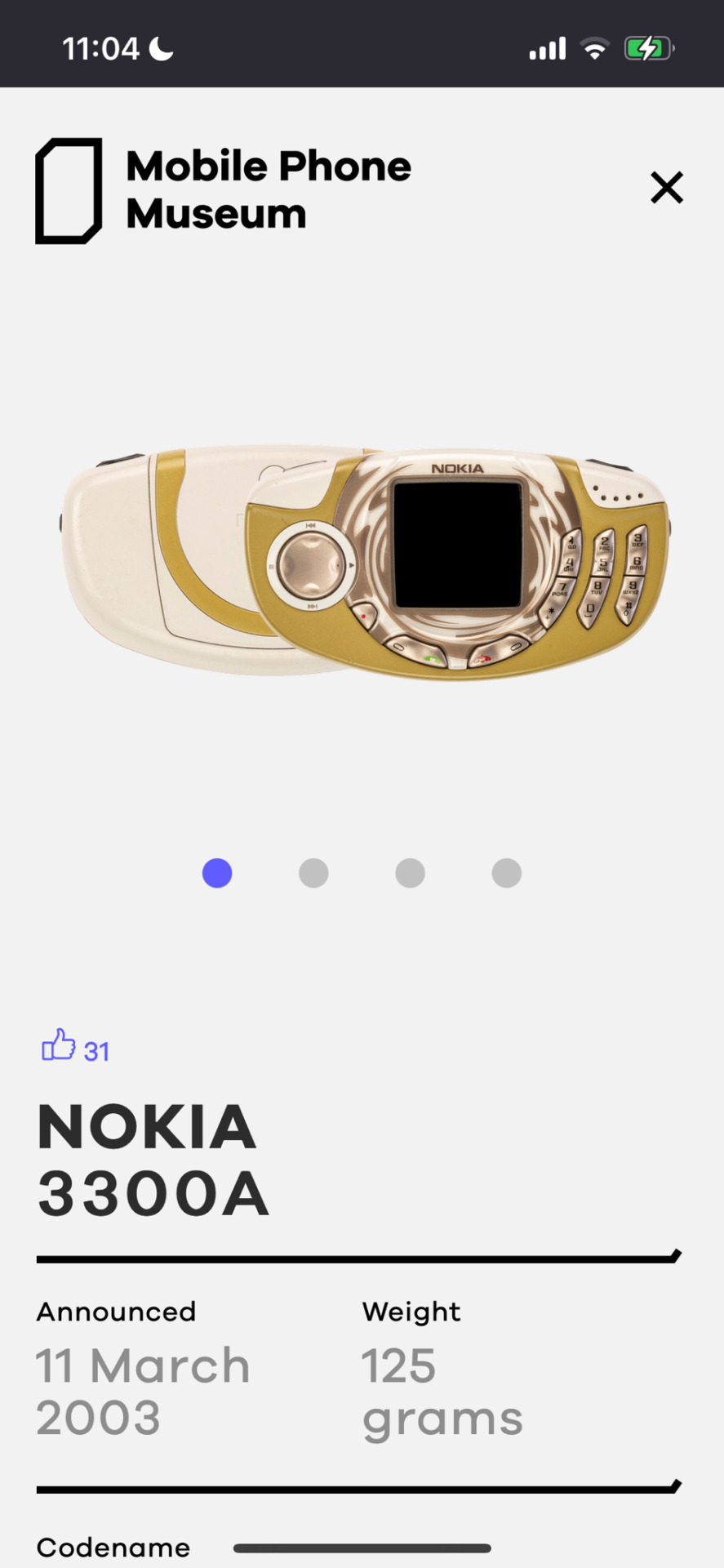
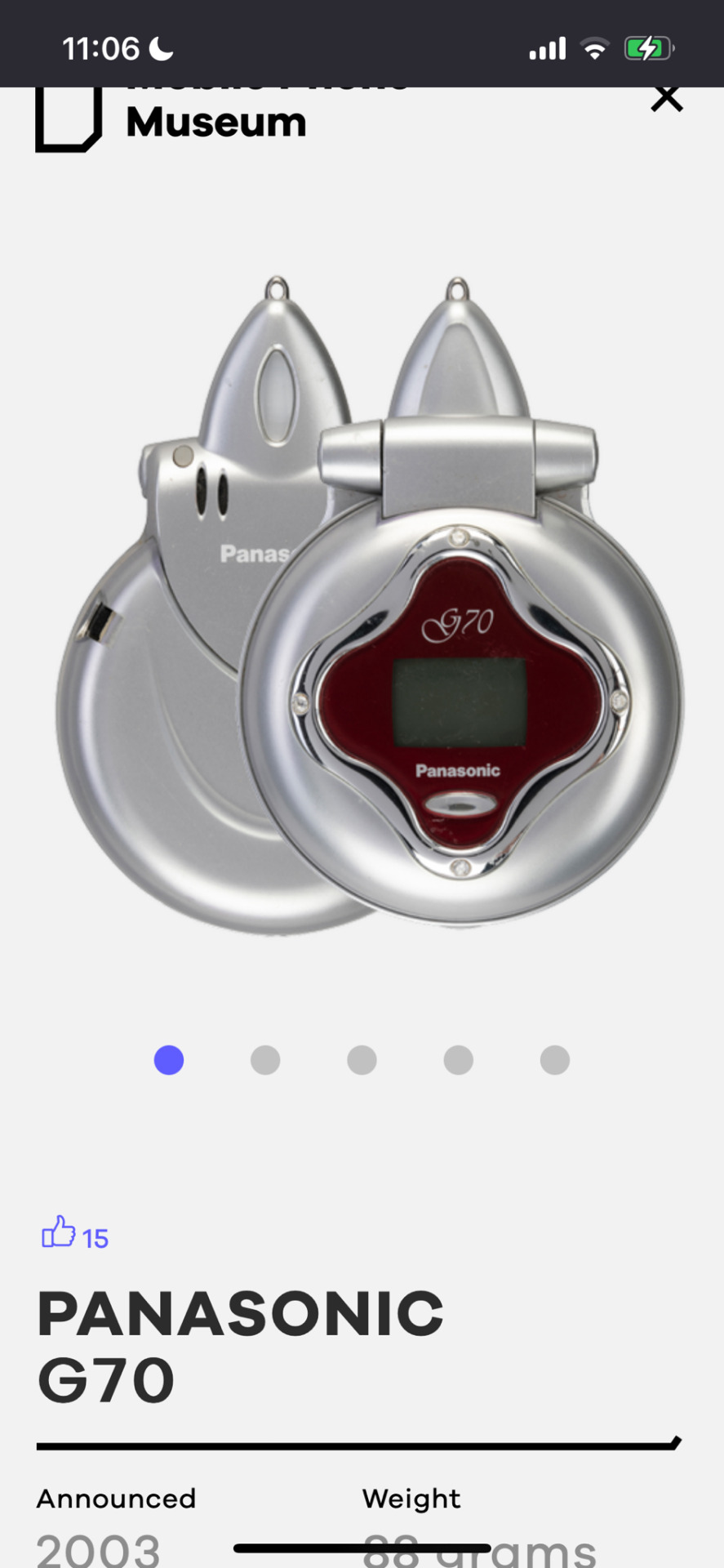
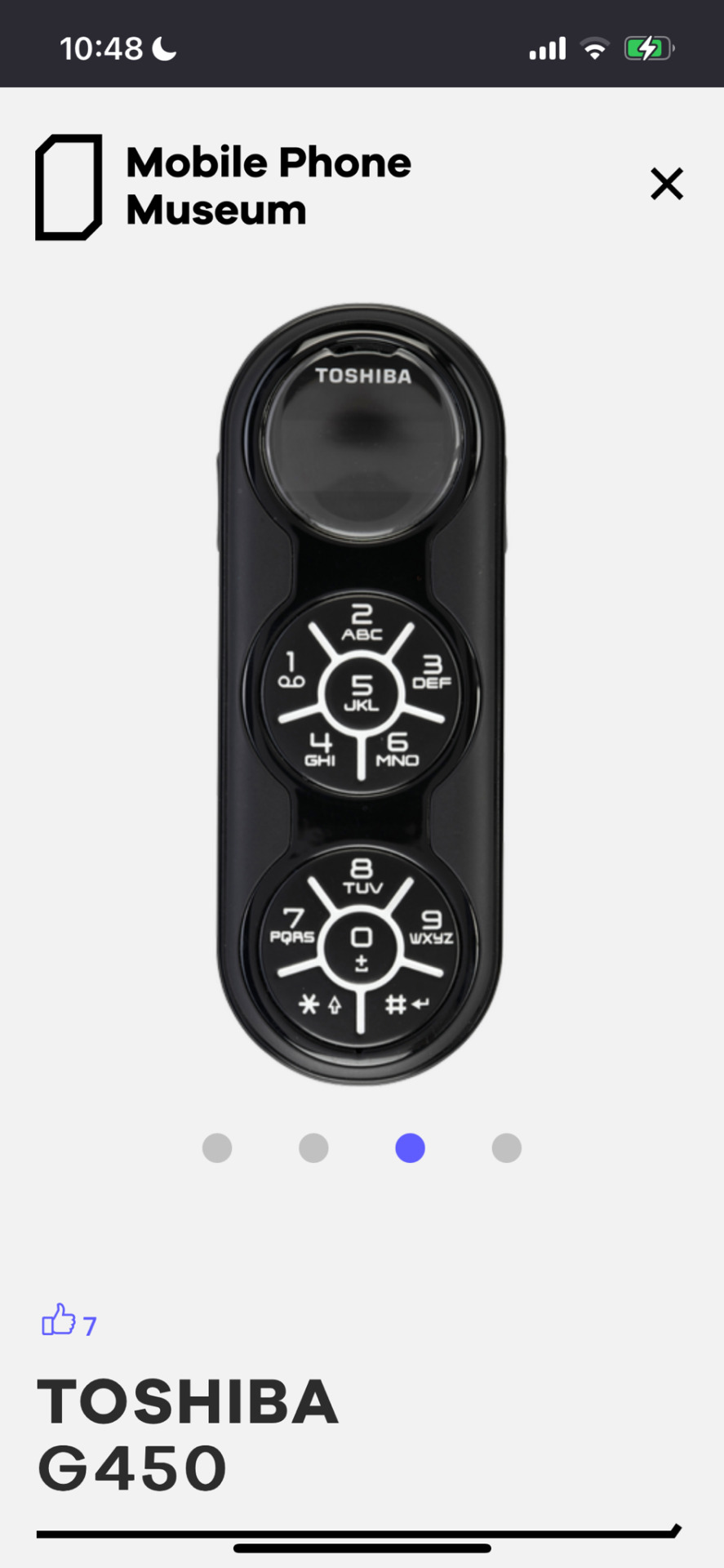



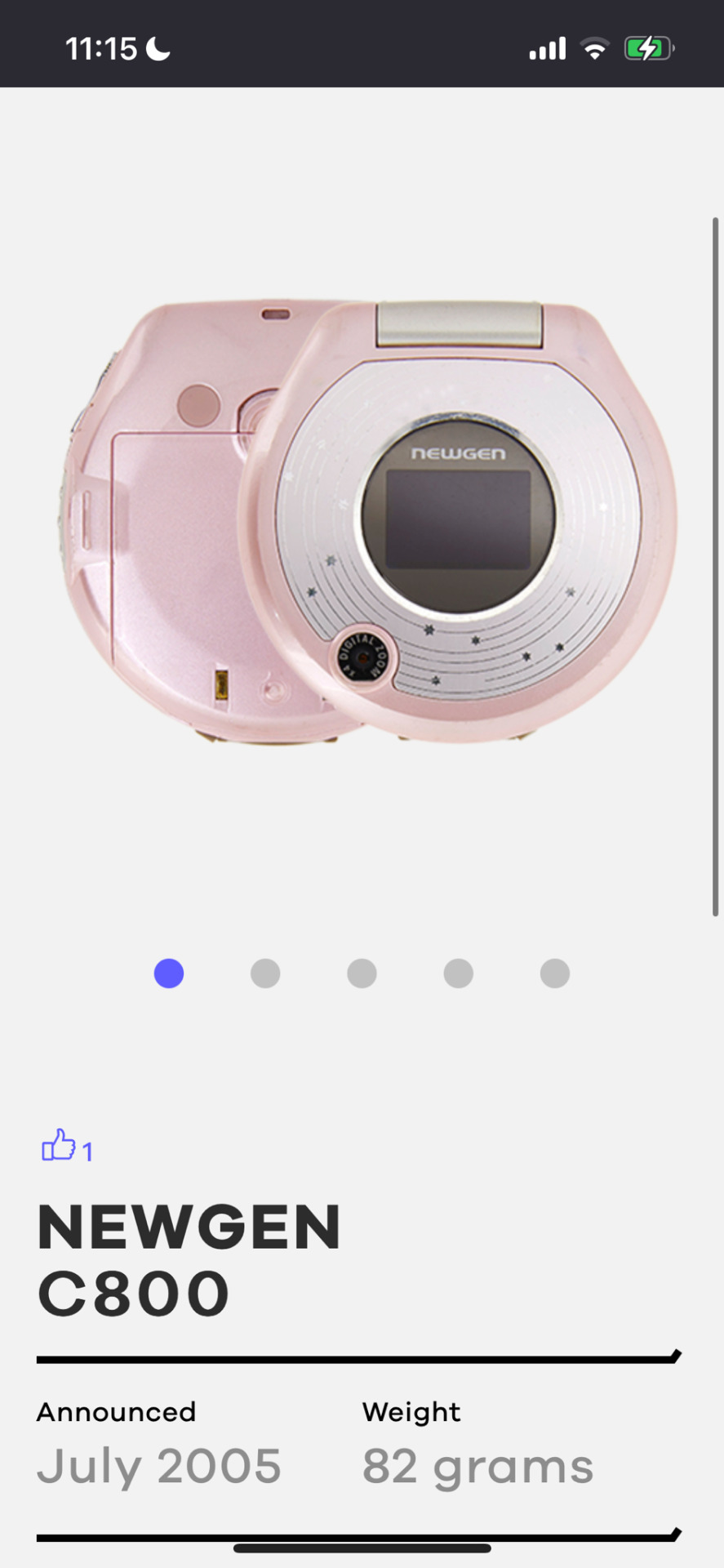
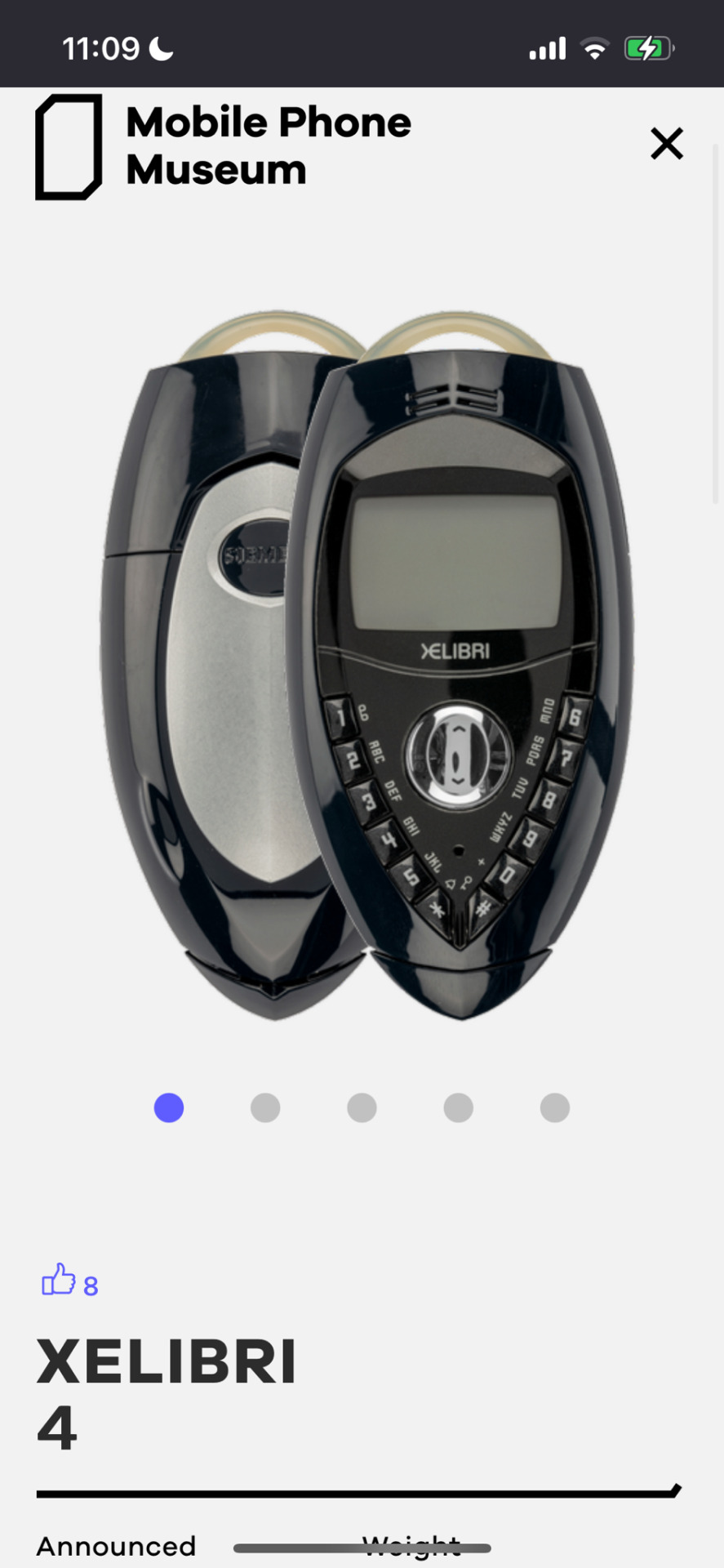

behold! some of my favourite silly creatures :3
#these are more early 00s era weird phones im gonna make a second post abt late 00s era cool fashion phones but oh my god I love this#I have 00s era phone autism i love them so much I respect this guy just collecting like thousands of them#00’s#00s tech#y2k#y2k aesthetic#old tech#resources
22K notes
·
View notes